Are you wondering if monstera plants like to be root bound? If so, you’ve come to the right place. In this article, we’ll explore what it means for a plant to be root bound and how that affects monsteras specifically. We’ll also discuss whether they prefer tight quarters or ample space in their pots.
If you’re curious about caring for your houseplant collection, this is important information. Monsteras are beloved houseplants due to their lush foliage and unique growth patterns—but if you want them to thrive, knowing when to repot is essential. Understanding these needs can help make sure your monstera stays healthy and happy!
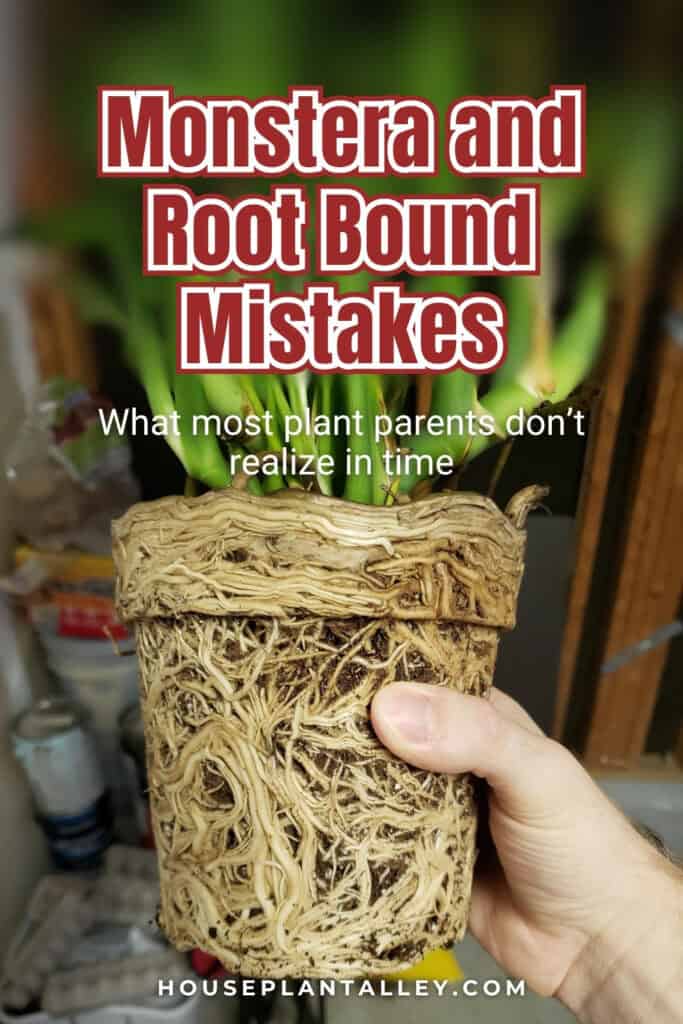
So let’s dive into the topic of root binding: What does it mean for a plant, why do some plants like being root bound while others don’t, and most importantly—do monsteras enjoy being constricted by their roots? Let’s find out!
Contents
What Does It Mean For A Plant To Be Root Bound?
Root binding is an issue that plant owners should be aware of. It occurs when a root system becomes too large for the pot it’s housed in, and can cause serious harm to your plants if left unchecked. A root ball describes this condition; roots have grown so tightly against each other that they form a dense mass or ‘ball’ around the base of the stem—preventing further growth and development.
When a plant is root bound, its roots lack access to essential nutrients and water, resulting in stunted growth and weak leaf production. In some cases, the roots may become diseased due to oxygen deprivation caused by overcrowding—leading to root rot.
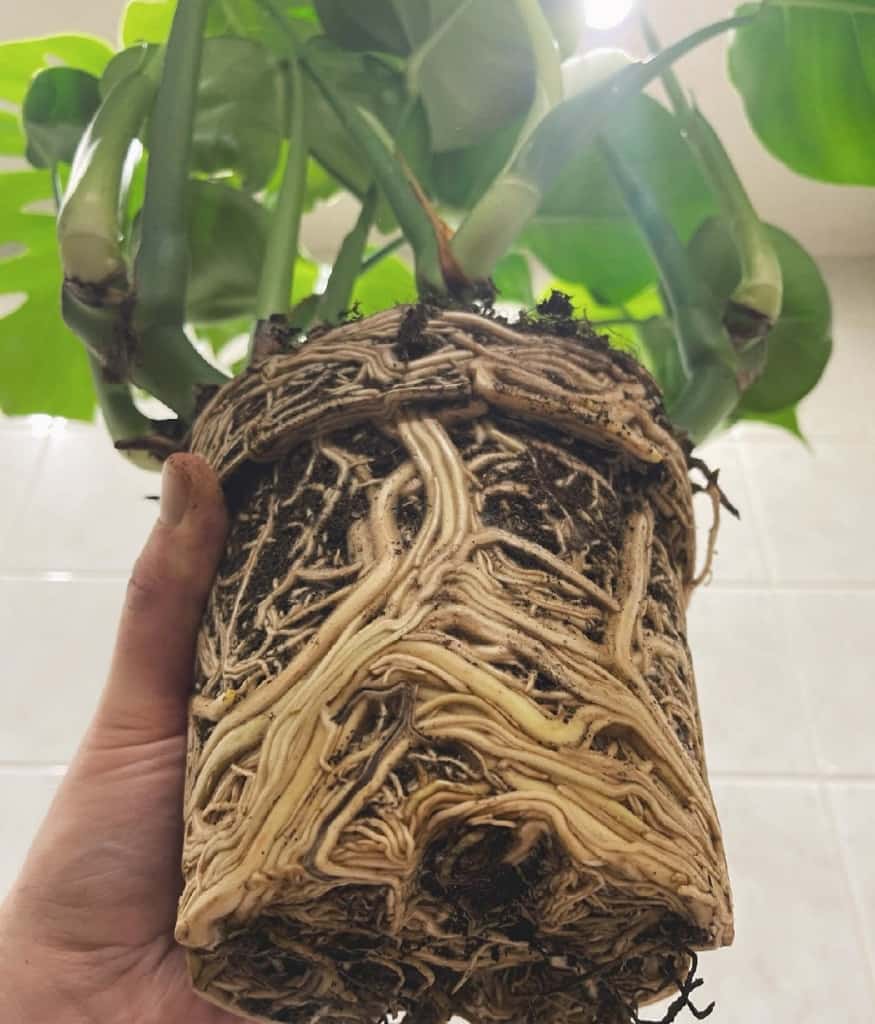
The best way to prevent these issues is through proper re-potting techniques. When you repot a plant, make sure you choose only slightly larger pots than what your current one provides—just enough space for new root growth without becoming too crowded again immediately. Inspecting the root systems regularly will help ensure there’s still room for healthy expansion before it starts affecting your plant’s health adversely. Additionally, careful loosening of the soil around the edges of the pot can provide additional breathing room for any limited root systems while allowing more efficient uptake of vital resources such as water and fertilizer.
No matter how much love and care we give our beloved houseplants, sometimes problems arise that are out of our control—but with vigilance and dedication towards their wellbeing, even something like root binding can be avoided!
Do Monstera Plants Like To Be Root Bound?
Root-bound monstera plants are a common problem. But do they actually like to be root bound? The answer is complicated, but with the right information and care you can help your plant thrive.
Monstera plants do not necessarily like to be root bound, but they can tolerate it.
Monstera plants do not like to be root bound because their roots need room to grow and spread out. This gives the plant room to absorb more nutrients and water, as well as provides better air circulation for the roots. When the roots are too crowded and packed in, it prevents the roots from accessing the needed resources, leading to stunted and unhealthy growth.
Despite the negative effects of being root bound, Monstera plants can tolerate it. This is because the larger Monstera species can handle a bit of root crowding and still produce foliage. However, it is important to note that these plants will not be able to reach their full potential and thrive until they are replanted in fresh soil and given the space they need. Otherwise, the plant will struggle to survive.
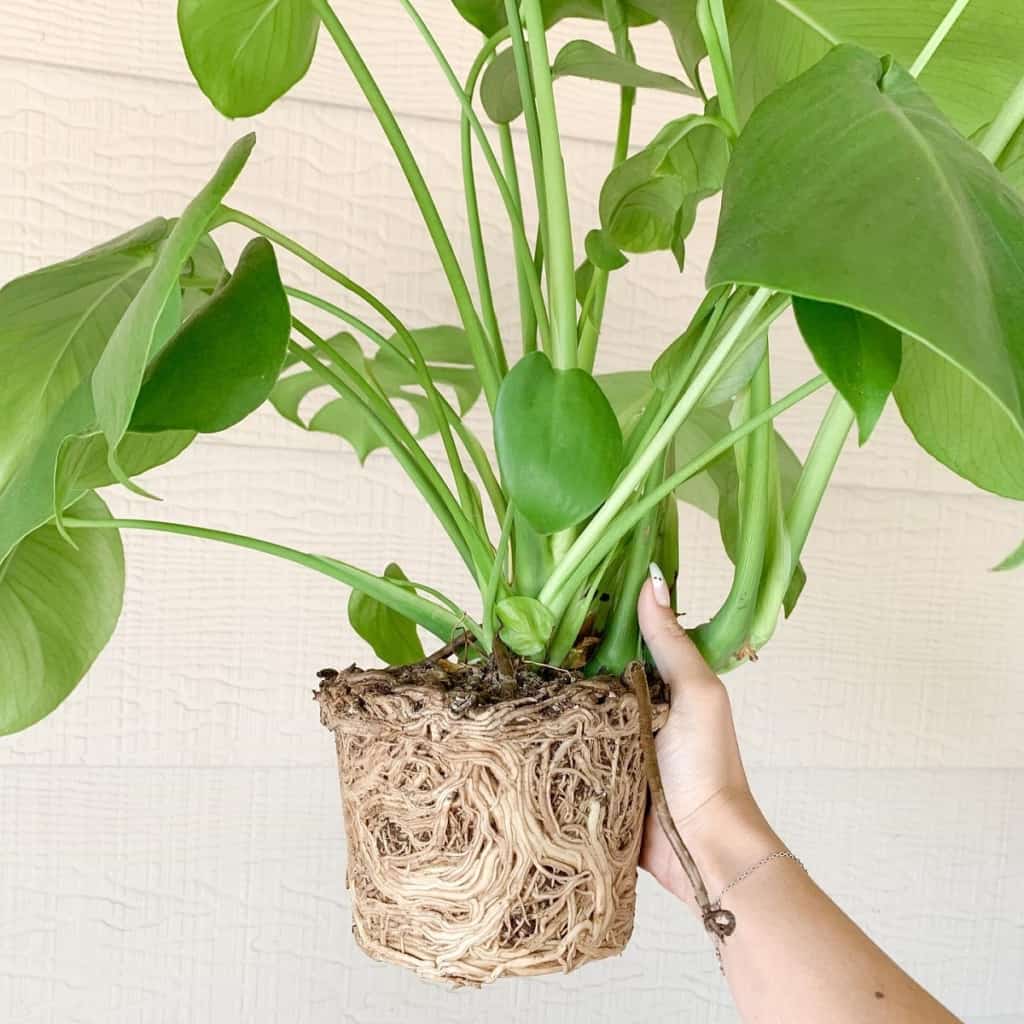
Related Post:
43 Different Types Of Monstera (With Pictures)
6 Signs That Your Monstera Is Root Bound
Are you concerned that your Monstera might be root bound? Here we’ll discuss the 6 signs to look for so you can determine if it’s time to repot.
First, let’s take a quick look at what being root bound means. When a plant is in a pot that’s too small, its roots become confined and intertwined with themselves. If this goes on for too long, the roots start to suffer from a lack of oxygen and space and will eventually die off.
So how do you know when your Monstera needs more room? Let’s explore these six tell-tale signs:
- Yellowing Leaves: If the monstera’s leaves are turning yellow, it could be a sign that it is root bound and needs to be repotted.
- Roots Growing Out of the Drain Holes: If the roots are growing out of the pot, it is a sign that the plant needs more room for the roots to grow.
- Wilting Leaves: If the monstera’s leaves are wilting or drooping, it could be a sign that the plant is lacking the necessary resources to stay healthy due to being root bound.
- Little or No Growth: If your monstera is not growing or is growing very slowly, it could be a sign that it is root bound.
- Potting Mix Sticking to the Roots: If the potting mix is sticking to the roots when you try to remove it, it could be a sign that the roots have grown too large for the pot and needs to be repotted.
- Plant Becoming Top Heavy: If the plant is becoming top heavy, it could be a sign that the roots are not getting enough support and the plant needs to be repotted into a larger pot.
All these factors should give you an idea of whether or not it’s time to put your beloved Monstera into a bigger home. If you’re still unsure, why not seek advice from an experienced gardener who can examine your plant up close? They will have the knowledge and experience necessary to advise on what size pot would best suit your particular situation.
Repotting doesn’t have to be daunting; if done correctly, it can help keep plants healthy by providing them with better conditions for growth!
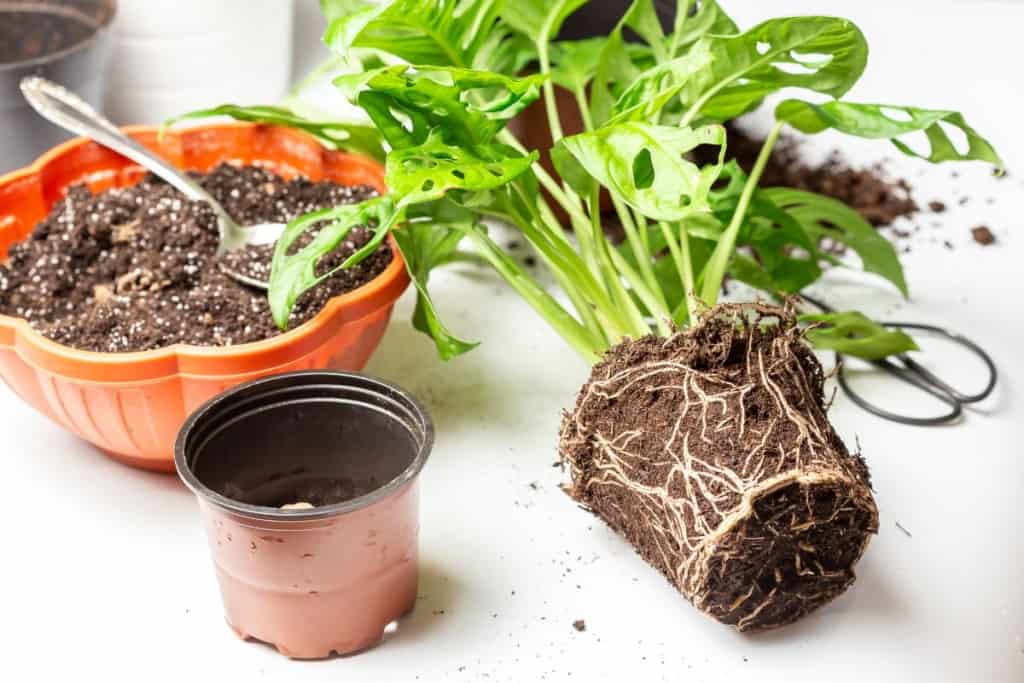
Related Post:
How Fast Do Monstera Grow?
How To Fix Root Bound Monstera
Root bound Monstera plants are a common problem, but the good news is that there’s a fix! A root-bound plant can be identified by its network of roots growing in circles around the base of the pot. It may also show signs of distress such as wilting or yellow leaves. Luckily, this issue can easily be resolved with these simple steps:
First, you should remove your Monstera from its pot and take a look at the roots to assess any damage. If needed, use sharp scissors to carefully trim away any dead or damaged roots. Then it’s time for repotting—make sure your new pot has drainage holes so excess water can escape and fresh soil which will give new life to the plant’s root system.
Once you have all the materials ready, start filling in the bottom of your container with soil and begin gently arranging your Monstera’s roots into place on top. Fill in more soil until everything is settled neatly inside—don’t forget to firm down lightly after each layer! Here are three key points to keep in mind when dealing with root-bound problems:
- Drainage holes are essential for proper hydration
- Fresh soil helps encourage healthy root growth
- Network of roots must be arranged properly to prevent stress
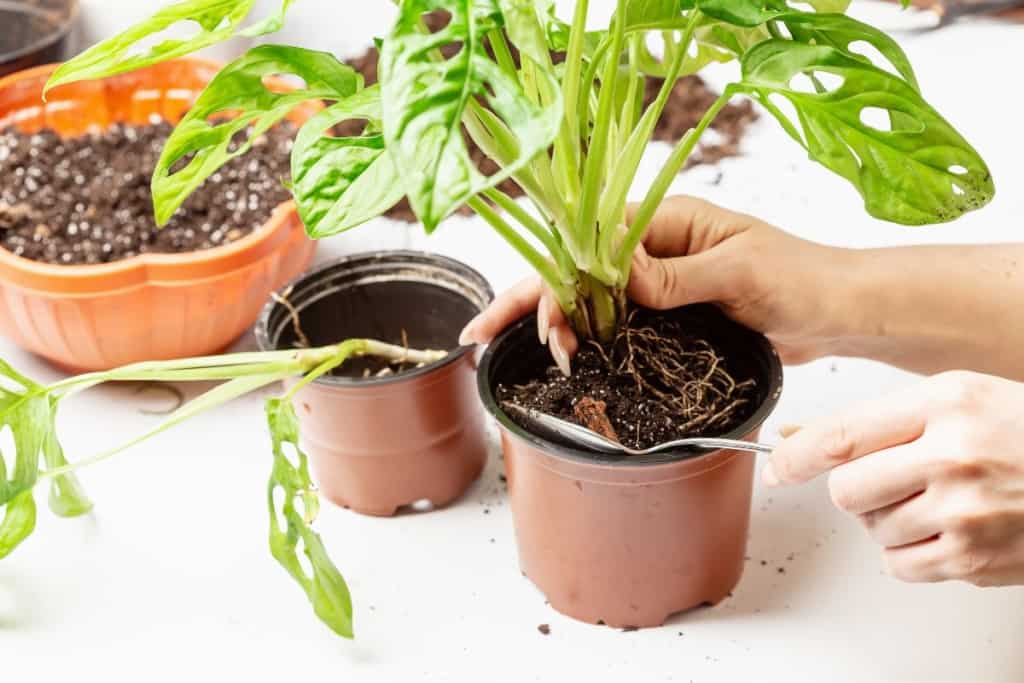
Now that we’ve gone through how to fix a root-bound Monstera, let’s review what we know: knowing how to identify and address a root-bound problem is an important skill every gardener should have under their belt. Taking care of our plants involves not only making sure they get enough light and water but also paying attention to their root systems too! With some extra TLC, it won’t take long before your beloved Monsteras come back healthier than ever!
Read Also:
How To Propagate Monstera In 3 Ways
Conclusion
In conclusion, root bound Monstera plants can be a tricky situation. Knowing the signs and how to fix it is important for any plant parent. It’s worth noting that while Monsteras don’t necessarily prefer being root bound, they are able to tolerate it better than some other species of houseplants. If you suspect your Monstera may be severely root bound, act quickly! Take care of this issue as soon as possible so you can keep your beloved plant healthy and happy.
I suggest taking an active role in monitoring your plant’s health—inspect its roots every few months or when repotting to look for signs of problems like root binding or overcrowding. Doing regular checkups will help ensure that your Monstera stays healthy and vibrant for years to come. And if you do find yourself with a root bound Monstera, know that there are steps you can take to correct the problem before it becomes too serious.
At the end of the day, caring for a houseplant isn’t always easy but it’s incredibly rewarding. Remember: if you’re ever unsure about what your plant needs or how best to give them proper care, seek advice from experienced professionals or research online resources. With just a little bit of extra effort, you’ll have a thriving Monstera in no time!
